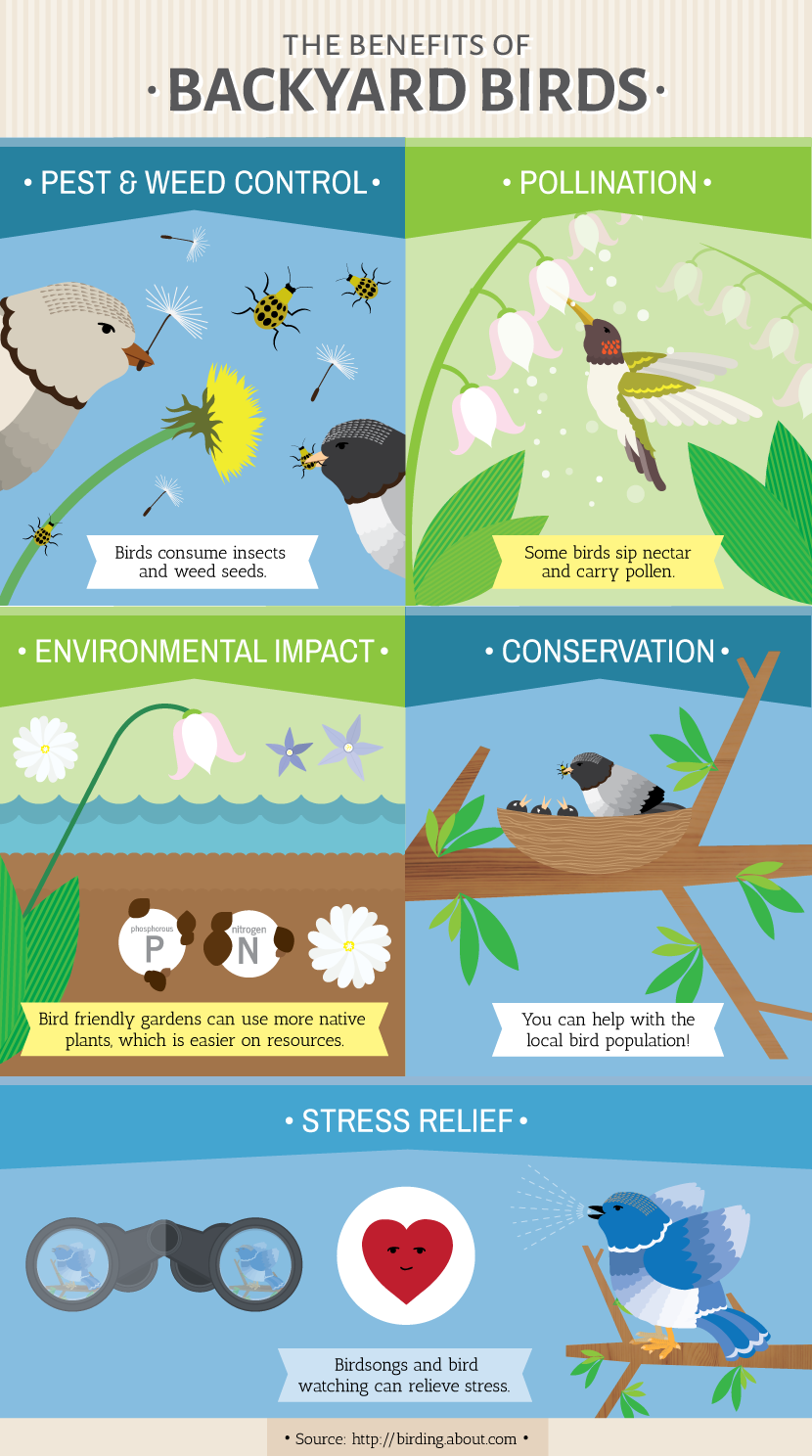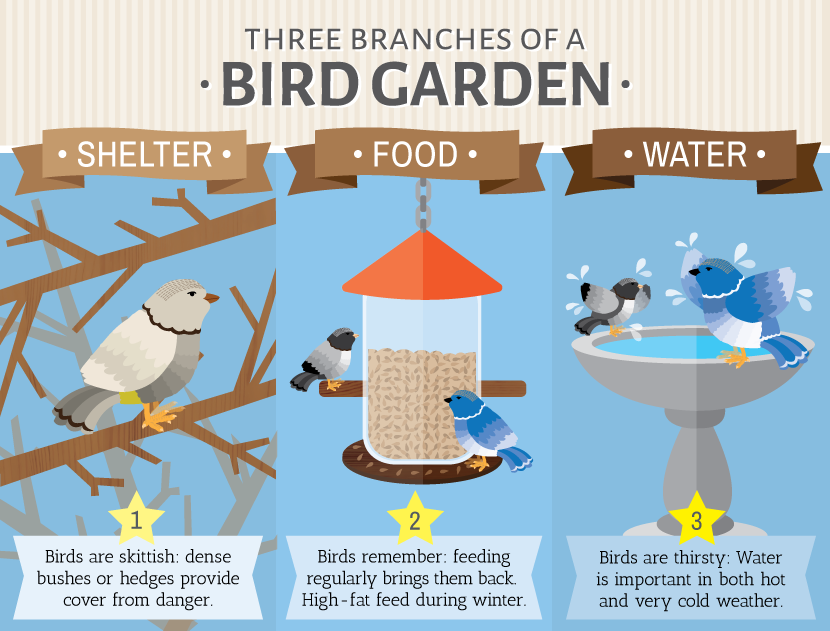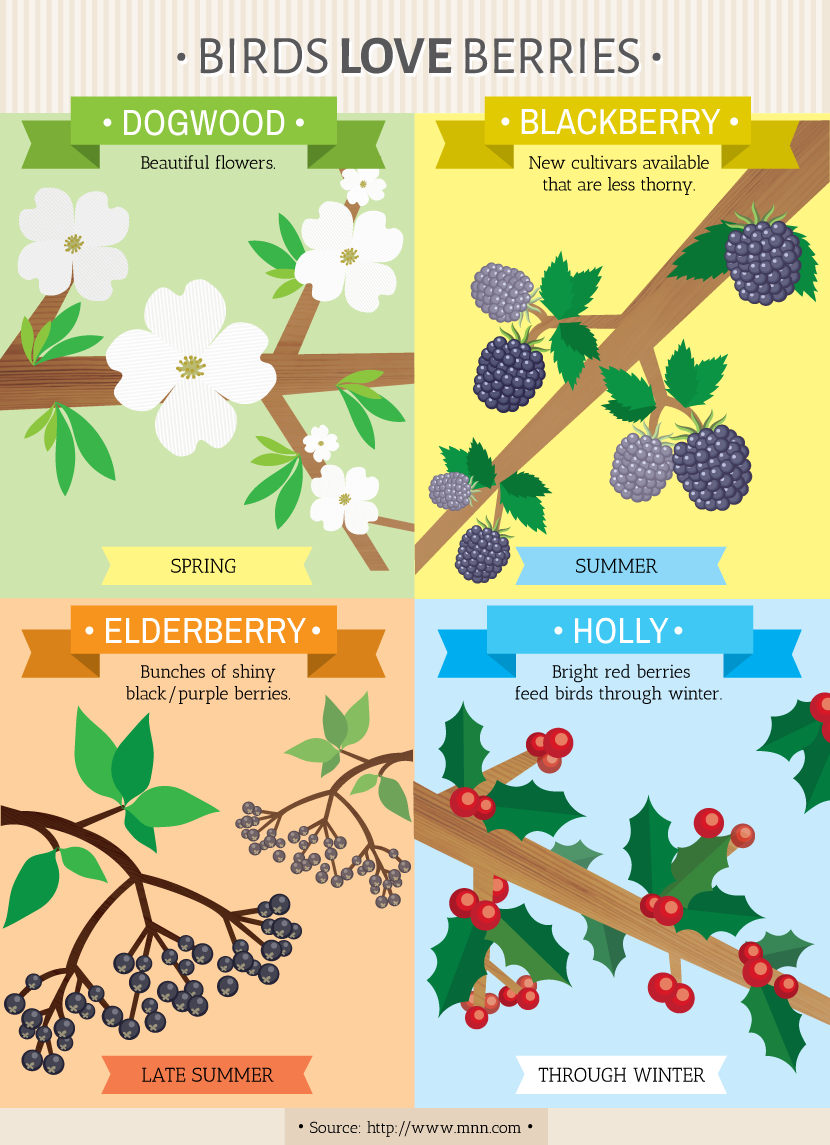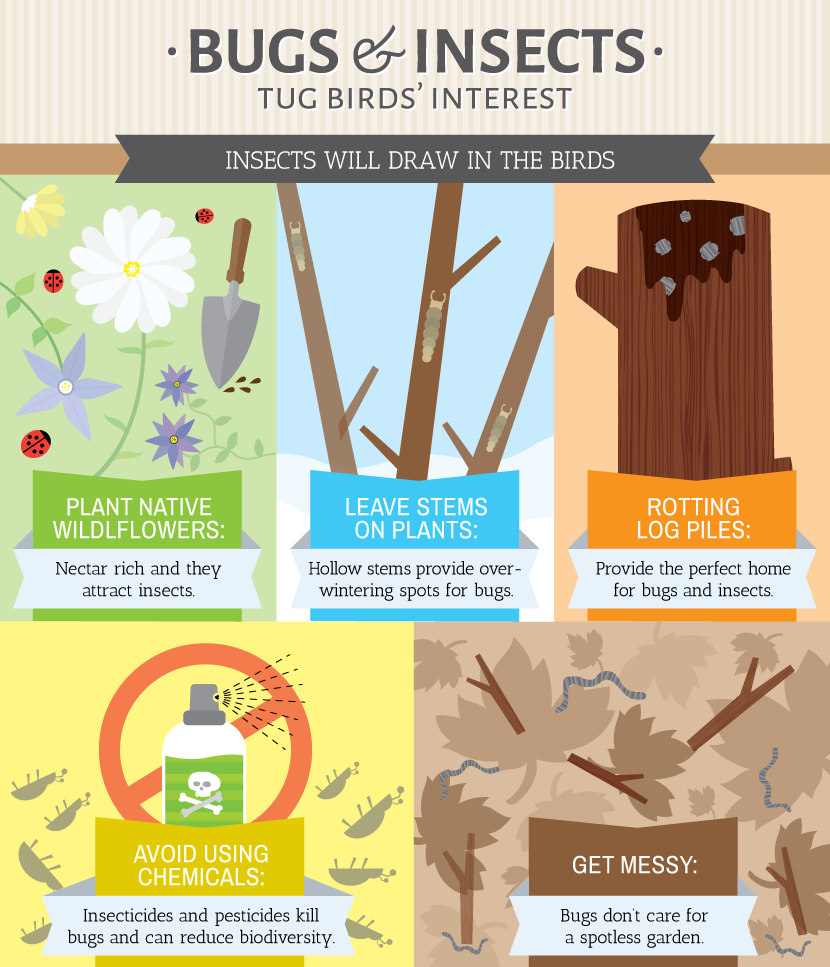Gardening for the Birds
A garden that birds visit has a life of its own. It doesn’t matter how beautiful your borders are or how finely shaped your topiary is, a garden with no wild, feathered visitors is a duller place than one that lures in flocks. Birds bring movement and interest to a garden.
But it’s not just about what birds bring you. Wild birds need help, and as their natural habitats shrink and disappear, gardens become havens. By making your garden a more welcoming place, you can become part of a network of garden refuges that help them survive and thrive. Here are a few things you can do to make your garden tempting and welcoming to wild birds.

Feed the birds
Regularly feeding the birds is the first, most important thing you can do to draw them into your garden. Once you start feeding birds, regularly keep doing it because birds can become dependent on you as a source of food, and you don’t want them to waste precious energy visiting an empty feeding station.
First, don’t be tempted to put out breadcrumbs. Birds will eat them, of course, but they are bulky and not especially nutritious. They fill birds up but don’t give them the nutrition they need. Your first feed of choice should be a good quality seed mix that will provide energy for a wide range of birds. You can feed with a seed mix throughout the year, so buy a big sack and always have it on hand to top up your feeders.
You should ensure you are following best practices when feeding birds to ensure you're not contributing to the spread of noxious weeds. Many common bird seed brands contain weed seeds in their mix, so it is a good idea to place a tray under your feeder to keep the seed off the ground. Additionally, you should consider choosing non-sprouting foods for birds, or using baked seeds, which have been killed and will not sprout. Some manufacturers are now offering baked seeds to prevent the spread of weeds.

During the winter, you can provide some more fatty foods. Fat balls are made by mixing melted suet with seeds and leaving them to set. Hang them from a tree or other perch, and the birds will flock to them. The extra fat this type of feed provides helps birds keep warm on winter nights. Peanuts are also fatty and a great winter feed, but you should never give them whole. Instead, pour peanuts into a feeder so birds have to peck small chunks from the peanuts or smash them up into smaller pieces. In the spring, tiny chicks can choke even on small pieces of peanut, so always stop giving peanuts in late winter, resuming come autumn.
Lots of birds love to eat fruit. An apple or two chopped up and thrown out on the lawn will keep them happy. If you have an apple tree with lots of windfalls, bag up the ones that are too bruised to eat and freeze them. You can then throw one out for the birds occasionally throughout the winter.
Mealworms are a wonderful source of protein, and you can buy them dried. Place them on a saucer or a flat feeder. You can pre-soak them to give the birds more moisture. You might also consider nyjer seed feeders, which are specialized feeders for the particularly fine nyjer seeds. These will lure in a different set of birds.
Remember to wash your feeders out with warm soapy water every now and then.
Grow Your Own Bird Food
Of course, you can grow plants the birds can feast on themselves. Some plants provide all sorts of seeds and berries for birds to pick over throughout the winter. Haws, sloes, dogwoods, buckthorns, elders, yew, pyracantha, rowan, and whitebeam are among many plants that produce good berries for birds. Holly and ivy are the most useful because their berries usually last until the very end of the winter, when food resources can be particularly scarce. Good seed-producing plants include teasels, sunflowers, thistles, field scabious, and greater knapweed. With all these plants, you need to be careful when pruning. Don’t do too much in the way of tidying up, cutting back, or pruning until spring or you will chop off all that goodness.

Provide Water
Water is almost as important as food, particularly in built-up areas where access to natural water sources may be very limited. A birdbath should be placed in an open spot where birds can see any predators approaching. It should be raised off the ground on a pedestal for the same reason. Keep it topped up in the summer and check if it is frozen in the winter; if it is, you can thaw it out with a little boiled water. Birdbaths should also be cleaned out at least once every two weeks.
The Question of Cats
Cats may be sweet and fluffy darlings to you, but they are terrors to wild birds. It has been estimated that domestic cats kill more than a million wild birds per year in the United States. If you have a cat, it is not sensible or fair to also encourage wild birds into your garden. However, you can do a few things to prevent your cat from causing too much damage elsewhere. The most important thing is to attach a bell to its collar, making it hard for your cat to sneak up on birds. Some large, bright-colored collars are also said to help make cats more visible to birds because the birds see bright colors easier than subtler ones. If possible, keep your cat indoors at dawn, when its instinct to hunt is at its strongest.
Another household concern for the birds you have attracted to your yard can be your windows. Windows that reflect the sky or the trees in your garden can be dangerous to birds, and it is always sad to hear or see one of your feathered friends hit a window. This can be avoided by hanging and planting feeders and plants further than 30 feet away from the nearest window, or closer than 3 feet from the nearest window. Further than 30 feet away, birds are far away enough from confusing reflections to not be in danger. Closer than 3 feet and the feeder's position will not allow the bird to gain enough momentum to have a deadly clash with the window. You should also consider decorating your windows with bright colors and hangings that indicate their presence. This will decrease the chance of a collision dramatically!

Provide Shelter
Birds will be happiest and safest in a garden with plenty of shelter. The best form of shelter is a series of dense bushes and hedges they can dive into should danger arise. A hedge running the length of the garden can also act as a “wildlife corridor,” and some smaller birds may live much of their lives in the safety from predators it provides. If your garden is all fences and lawn, birds will not feel safe in it. Start planting shrubs. Making your garden a place where birds will feel happy and safe and where they know they can find food and water whenever they need it is worth the small amount of effort involved. Your local wild birds will benefit greatly, and so will you!
Embed the article on your site

